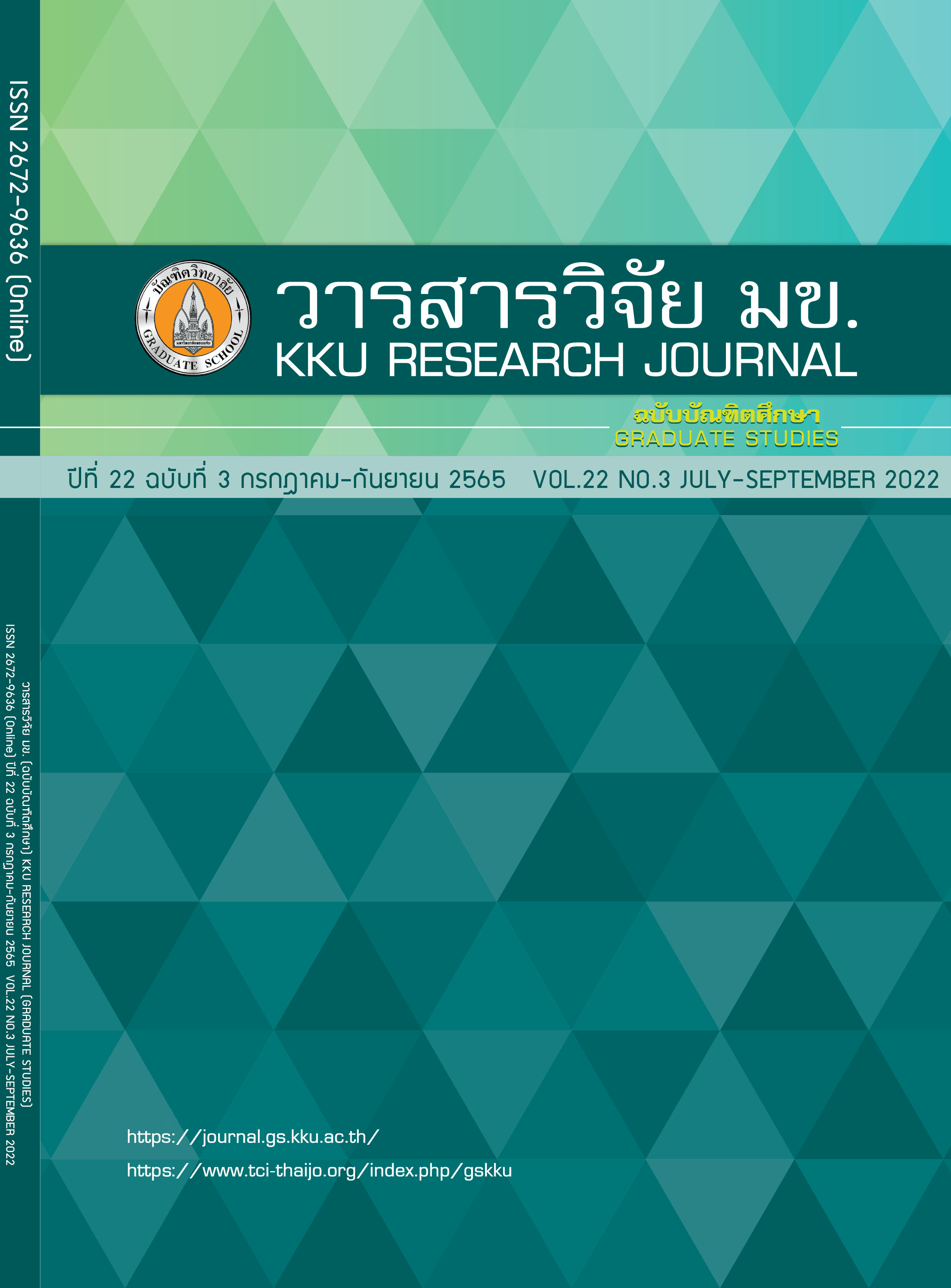Mobile Phone Use Behavior While Riding Motorcycles Through Signalized Intersections in Khon Kaen City, Thailand
Keywords:
Mobile phone use while riding, Hand-held mobile phone usage, Motorcyclist, Signalized intersectionAbstract
Mobile phone use by hand-held while riding motorcycle is one of the risky driving behaviors that violate the law. This study aims to study mobile phone use behavior while riding motorcycle in Khon Kaen City, Thailand. The study area consists of four signalized intersections. This study collected 13,947 samples of motorcyclists. The Pearson Chi-square test was applied to compare the proportion of mobile phone use behavior. The study results found that there were 1,362 mobile phone used motorcyclists (9.8%), classified into 1,081 mobile phone use by hand-held (7.8%), 281 mobile phone use by hands free (2.0%). Proportions of mobile phone use behavior (Illegal behavior) were different significantly according to p intersections’ physical conditions and drivers’ characteristics.
References
World Health Organization. Global Status Report on Road Safety 2018. Global Status Report on Road Safety 2018; 2: 227–249.
The National Highway Traffic Safety Administration. Distracted Driving in Fatal Crashes 2017. Traffic Safety Facts 2019.
Glassbrenner D. Driver Cell Phone Use in 2005 - Overall Results. Traffic Safety Facts Research note 2005.
National Statistical Office of Thailand. ICT household survey report 2018 [Internet]. 2018 [cited 2018 Oct 26]. Available from: http://www.nso.go.th/sites/2014/Pages/News/2561/N26-10-61.aspx. Thai.
Collet C, Guillot A, Petit C. Phoning while driving I: A review of epidemiological, psychological, behavioural and physiological studies. Ergonomics 2010; 53(5): 589–601.
Collet C, Guillot A, Petit C. Phoning while driving II: A review of driving conditions influence. Ergonomics 2010; 53(5): 602–616.
Schlehofer MM, Thompson SC, Ting S, Ostermann S, Nierman A, Skenderian J. Psychological predictors of college students’ cell phone use while driving. Accident Analysis and Prevention 2010; 42(4): 1107–1112.
Thai RSC. Annual statistics on the use of the Injury and Death Act [Internet] 2019. Available from: http://www.thairsc.com/p77/index.htm?provid=40. Thai.
White KM, Hyde MK, Walsh SP, Watson B. Mobile phone use while driving: An investigation of the beliefs influencing drivers’ hands-free and hand-held mobile phone use. Transportation Research Part F: Traffic Psychology and Behaviour 2010; 13(1): 9–20.
Truong LT, Nguyen HTT, De Gruyter C. Mobile phone use among motorcyclists and electric bike riders: A case study of Hanoi, Vietnam. Accident Analysis and Prevention 2016; 91: 208–215.
Kumphong J, Satiennam T, Satiennam W. The determinants of motorcyclists helmet use: Urban arterial road in Khon Kaen City, Thailand. Journal of Safety Research 2018; 67: 93–97.
Downloads
Published
Issue
Section
License
Copyright (c) 2022 KKU Research Journal (Graduate Studies)

This work is licensed under a Creative Commons Attribution-NonCommercial-NoDerivatives 4.0 International License.



